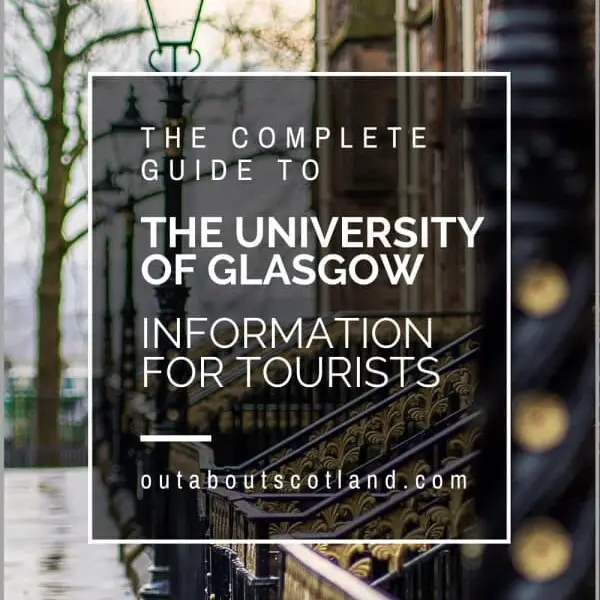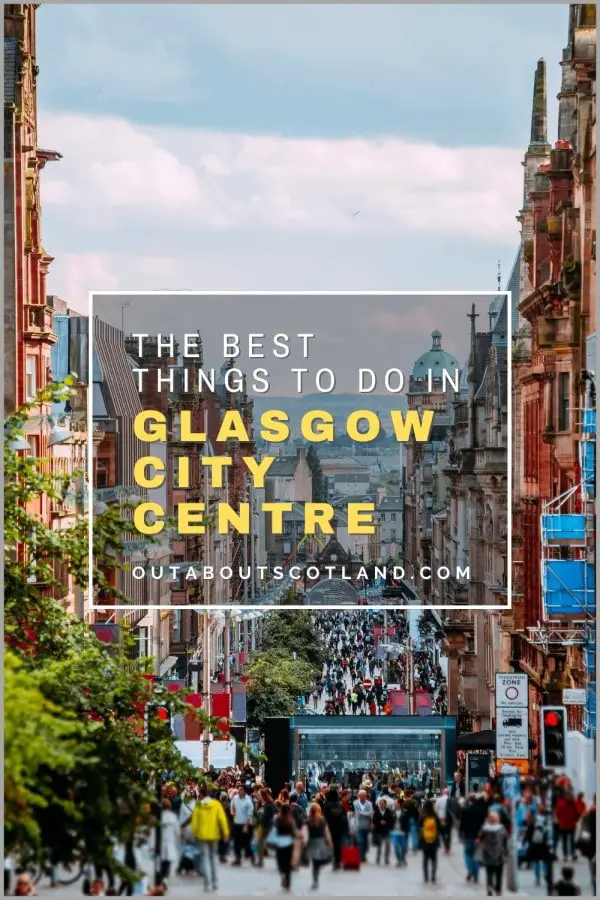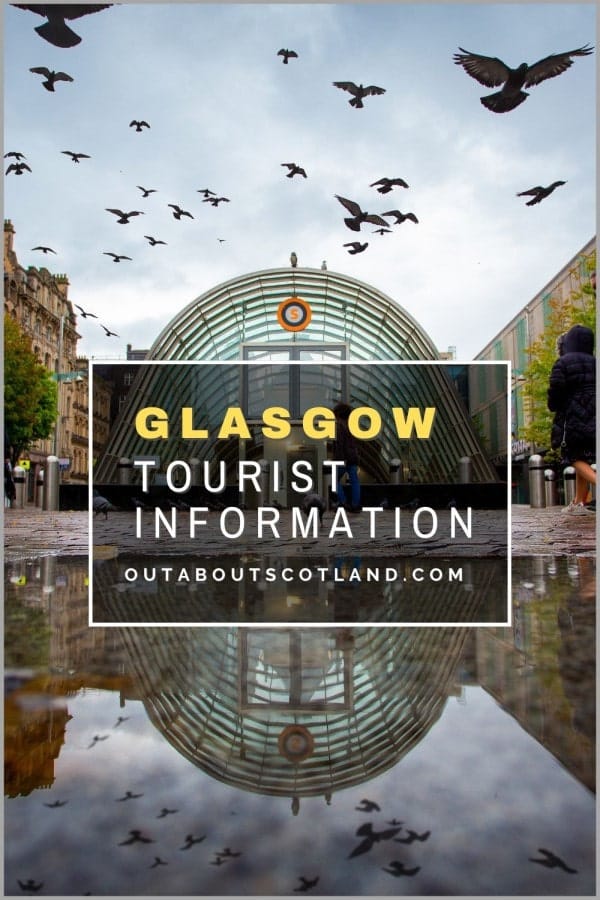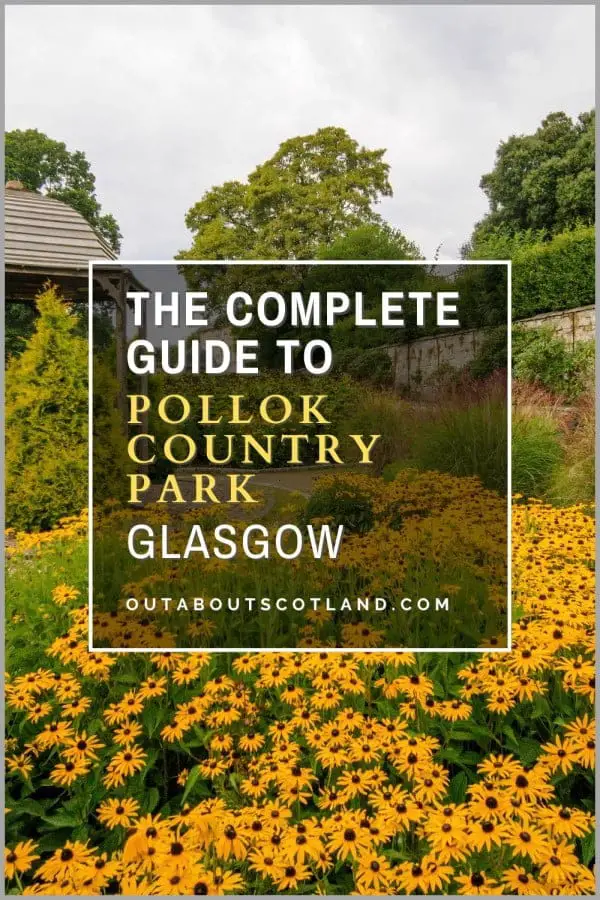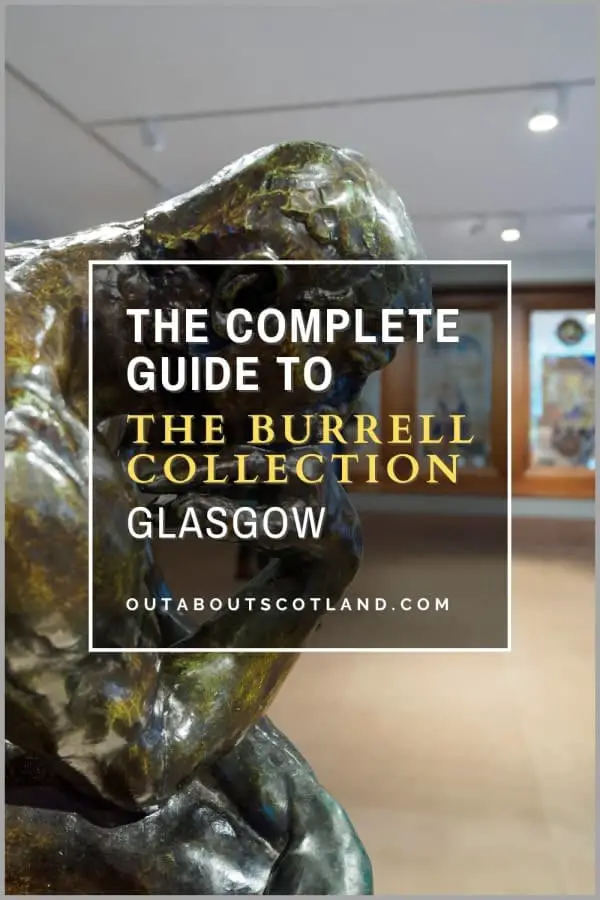The University of Glasgow was founded in 1451, making it the fourth-oldest university in Britain and one of the oldest in the world. Located in the heart of Glasgow’s West End, it has more listed buildings inside the complex than any other university in the UK.
A visit allows tourists to explore the superb Hunterian Museum and Hunterian Art Gallery, as well as the university grounds. Entry is free, and the exterior of the university is accessible 7 days a week.
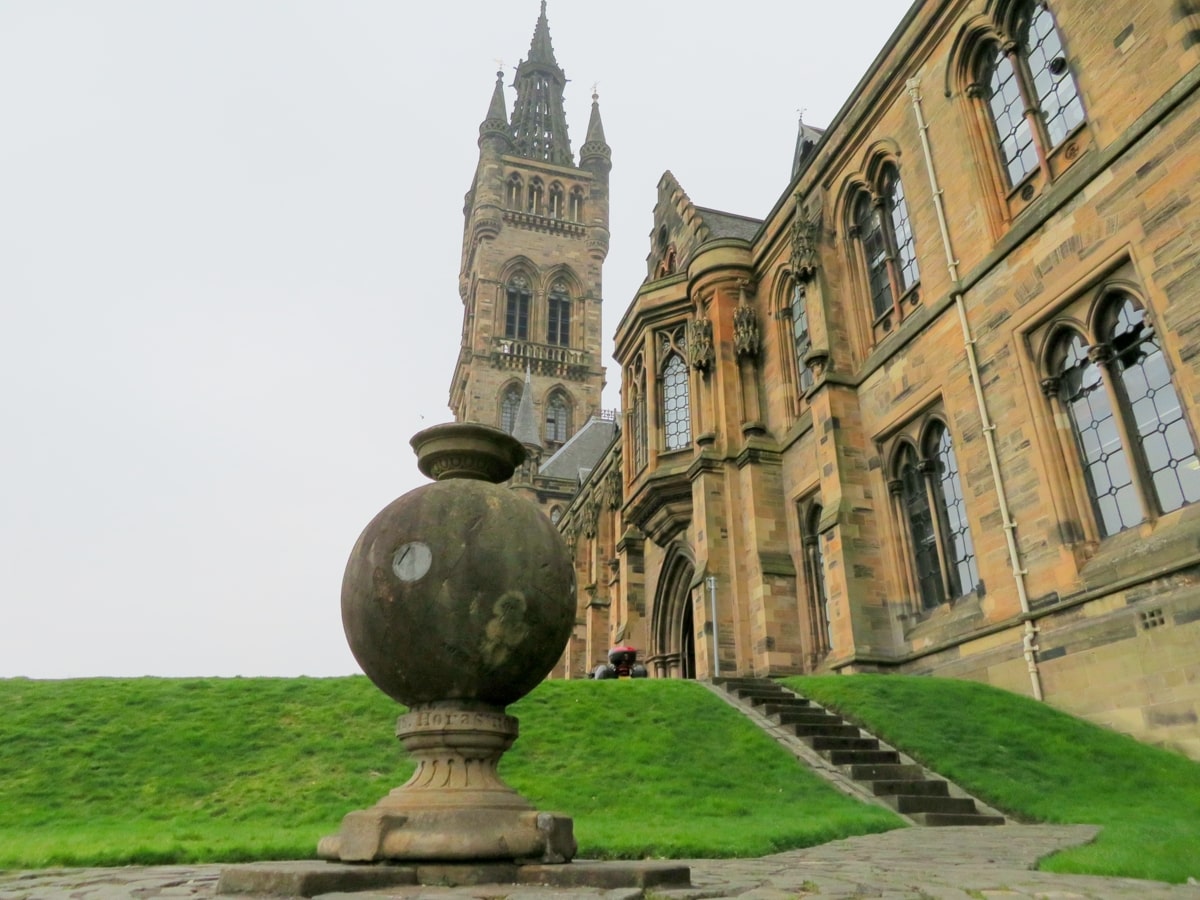
| Address: | University Avenue, Glasgow, G12 8QQ |
| Opening Hours: | University opening times vary by department. Grounds are open 24/7. Scheduled tours, Tuesday - Sunday at 2 pm. |
| Admission Price: | Free |
| Parking: | No public car park |
| Contact: | N/A |
| Facilities: | Cafe, restaurant, gift shop, toilets, baby changing |
| Photos: | Virtual Tour YouTube Video |
Overview
If you’re thinking about heading to Glasgow to explore its tourist attractions, I wouldn’t blame you if the last place you have on your to-do list is the University of Glasgow. After all, who wants to stroll through a dull university filled with a lot of dingy old books?
The truth is, however, that a visit to the university buildings located north of Kelvingrove Art Gallery and Museum is one of the highlights of a sightseeing tour of the city, and there’s much more to see than you might initially think.
The university is easy to get to from pretty much anywhere in Glasgow thanks to the city’s excellent bus and subway networks, but if you’re in the vicinity of Kelvingrove Park you’ll find the university is just a 10-minute walk away.
Your first port of call will likely be the Memorial Gates on University Avenue, where you’ll see the ornate Gilbert Scott Building. This is one of the oldest parts of the university, though the institution was actually founded in 1451, making it the 4th oldest university in the English-speaking world.
These buildings are among the finest in the city and their Gothic architecture is a sight to behold, with The Cloisters being a firm favourite with visitors. The Cloisters (a vaulted corridor) has been featured in several movies and TV shows over the years, and viewers of Outlander will no doubt recognise it as the setting for Harvard University.
Once you head inside the Gilbert Scott Building you’ll find the enormous East and West Quadrangles joined by the fluted columns and ribbed ceiling of The Cloisters, but before exploring further, I recommend taking the time to walk around the path circling both quadrangles to soak up the atmosphere of the place.
Have you seen the Harry Potter movies when they’re at Hogwarts? Well, that more or less sums up what the buildings surrounding The Quadrangles look like: looming towers, cathedral-like windows, and dark archways that lead off into secretive nooks and crannies.
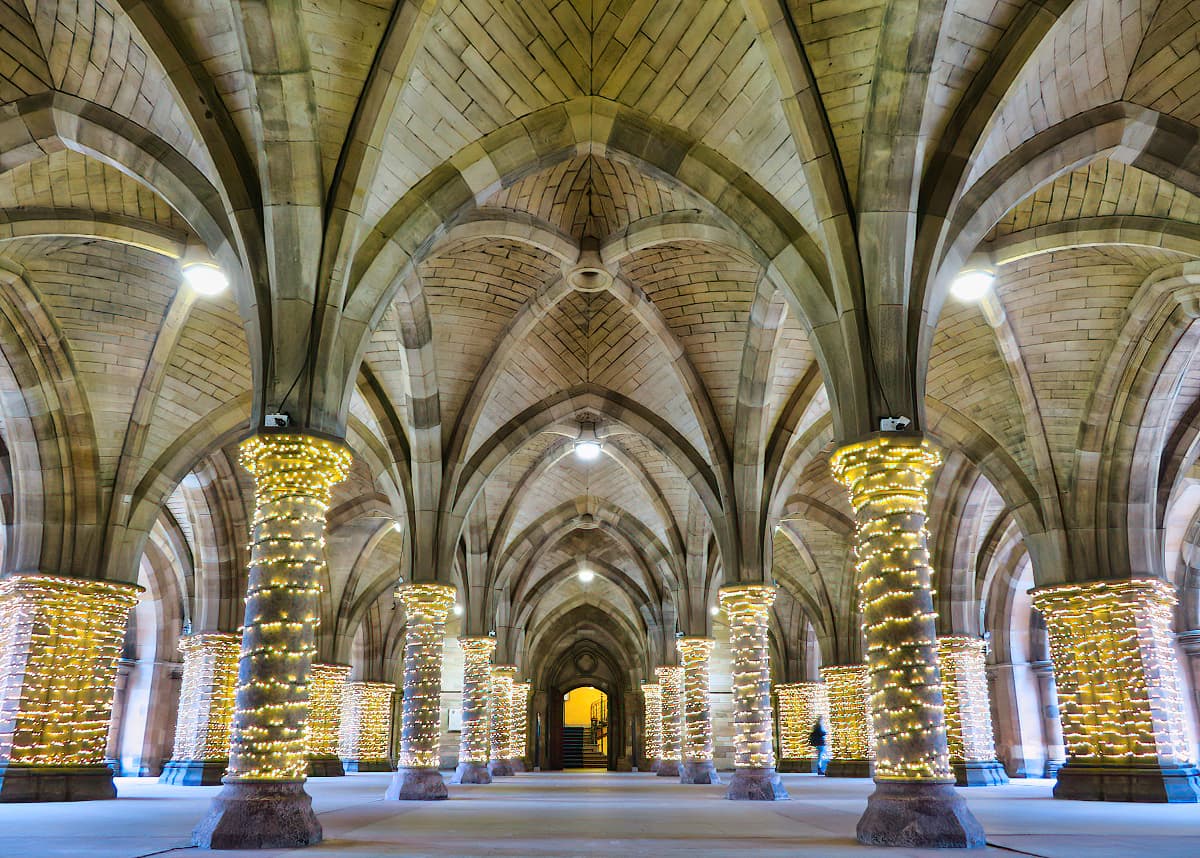
The Highlights
1: The university buildings are stunning. Don’t forget to visit The Quadrangles and The Cloisters which have been featured in several TV series.
2: Perhaps the highlight of a visit to the university is the Hunterian Museum which is one of the best small museums in Scotland.
3: Like all the best attractions in Glasgow, visiting the University of Glasgow is free! The only paid exhibition is in the Mackintosh House.
Visiting Tips
1: If you want to discover the history of the university, join a guided tour. Public participation in these tours is free and run by university volunteers. See the University of Glasgow website for details.
2: The facilities on-site are pretty good, with cafés and a gift shop in addition to the museums, but as the university is located close to Kelvingrove, it’s a nicer option to eat in the park.
3: If you need a breath of fresh air after visiting the campus you’ll find the Glasgow Botanic Gardens a half-hour walk to the north of the city.
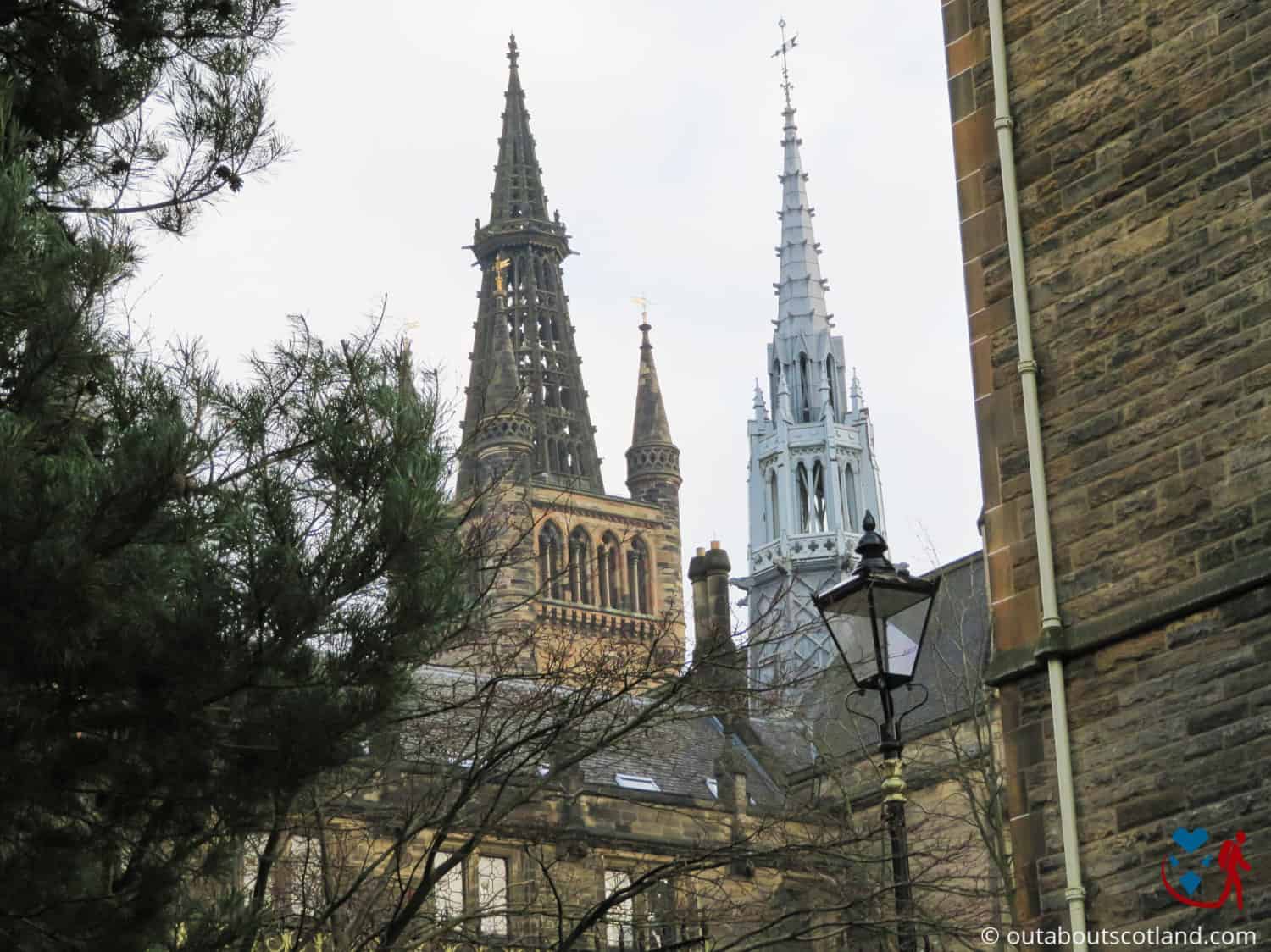
Tourist Information
When you get to The Quadrangles, don’t go thinking that’s all there is to see because there are several areas of the university that are open to the public. Just be aware that it’s a working university, so some areas are off-limits to the general public.
The Chapel was built in 1929 as a memorial to the 733 university members who died in World Wars I and II, and it’s still used today for ceremonies and religious services today. It’s one of the few places in Scotland where Catholics and Protestants can wed, and it features stunning stained glass windows by Douglas Strachan. To find it, head to the east quadrangle and follow the signs.
Bute Hall is possibly the most impressive part of the university as it’s where where the graduation ceremonies are held. The hall was built between 1878 and 1884 and features a huge arched wooden roof and majestic stained glass windows.
There are terraces where visitors can sit during the ceremonies, and upwards of a thousand people can comfortably fit inside. You’ll find the hall by walking through the Cloisters and heading up the stairs towards the Hunterian Museum.
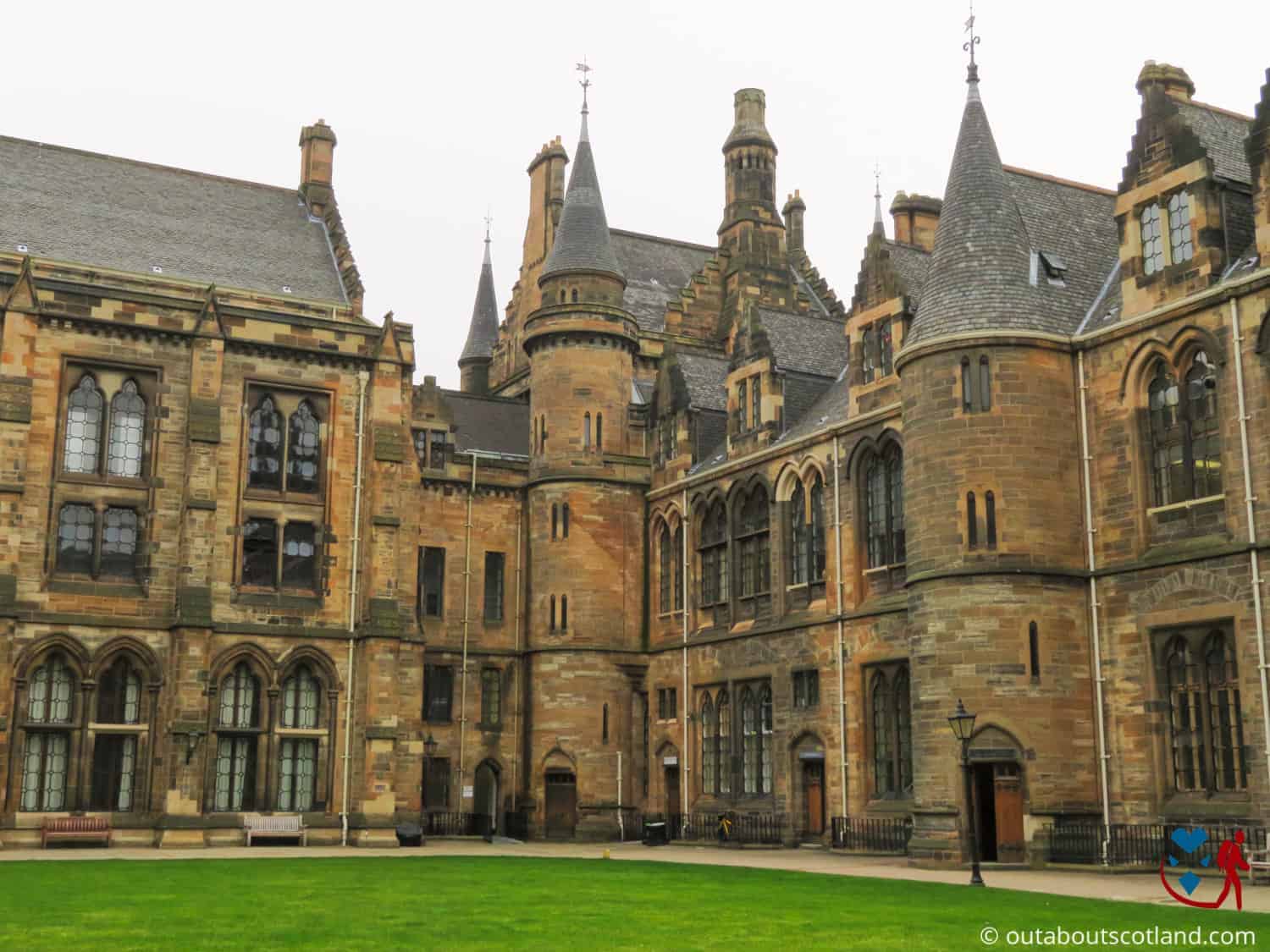
The Hunterian Museum can be found opposite Bute Hall, and to my mind, it’s one of the best museums in Glasgow. Founded in 1807, The Hunterian is Scotland’s oldest museum, and although it’s not particularly big, it features some fascinating displays from the fields of archaeology, palaeontology, and zoology, as well as several other ‘ologies’ you’re bound to find interesting.
There are dinosaur bones, medical instruments, ancient tools, Roman artefacts from the Antonine Wall and much more to see during a visit. It’s also free to enter and is open from 10 a.m. to 5 p.m. Tuesday through Sunday.
The Hunterian Art Gallery is located beside the university library and hosts one of the finest public art collections in Scotland. You’ll find works by Rembrandt as well as the single largest number of works by the celebrated Glasgow architect Charles Rennie Mackintosh.
The Mackintosh House is located in the art gallery, where it exhibits some of the interiors of Mackintosh’s home that was demolished in the 1960s. It’s quite an interesting museum, but unlike the Hunterian Art Gallery, which is free, the Mackintosh House has an entrance fee. See The Hunterian website for current prices.
In addition to these attractions, the University of Glasgow has a superb souvenir shop under the Hunterian Museum that has lots of tartan-themed gifts and university merchandise, and there’s a reasonably priced café if you want to grab a bite to eat after your sightseeing tour.
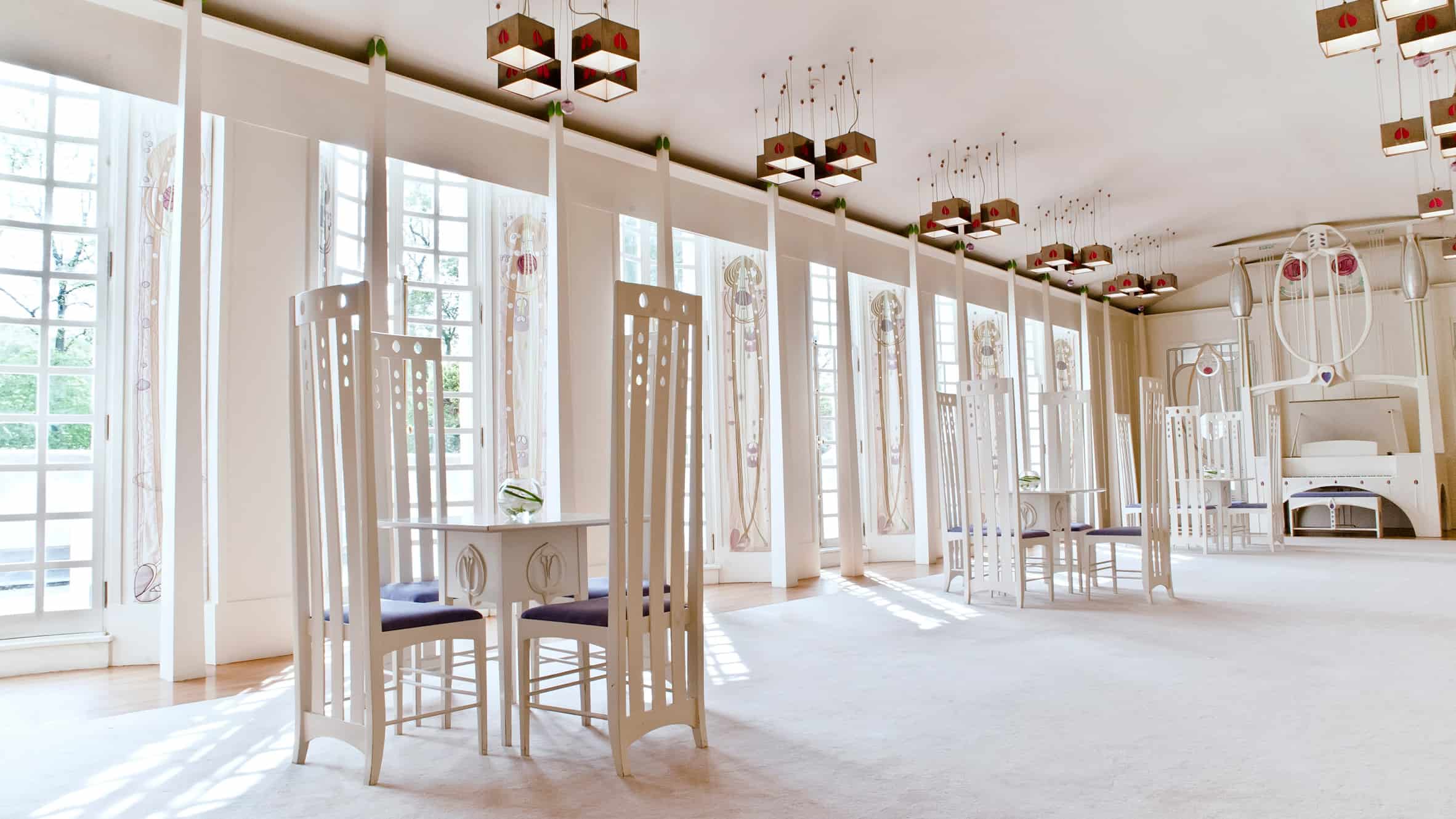
Things to Do
Explore the Hunterian Museum: Located within the University of Glasgow, the Hunterian Museum is Scotland’s oldest public museum. It hosts a wide range of exhibits, from Roman artefacts to displays of surgical tools. Entry is free.
Self-Guided Tour: Follow the self-guided tour provided by the university’s website to see all of the main features of this remarkable institution, from the Memorial Gates to the Lion and Unicorn Staircase.
Discover the Cloisters: The iconic undercroft connecting the university’s buildings is a sight to behold. Known as the Cloisters, these archways are a popular photo spot due to their beautiful Gothic design.
Hunterian Zoology Museum: Located in the Graham Kerr building, this free museum showcases the fascinating world of the animal kingdom, from the tiniest worms and sponges to giant marine mammals. The museum features skeletons, taxidermied animals, and lots of reading material that discusses each exhibit.
Stroll around the University Gardens: The campus has several gardens that offer an escape from the city’s hustle and bustle. Enjoy a leisurely walk, have a picnic, or simply sit and admire the scenery. In addition, the vast Kelvingrove Park is less than a 5-minute walk away.
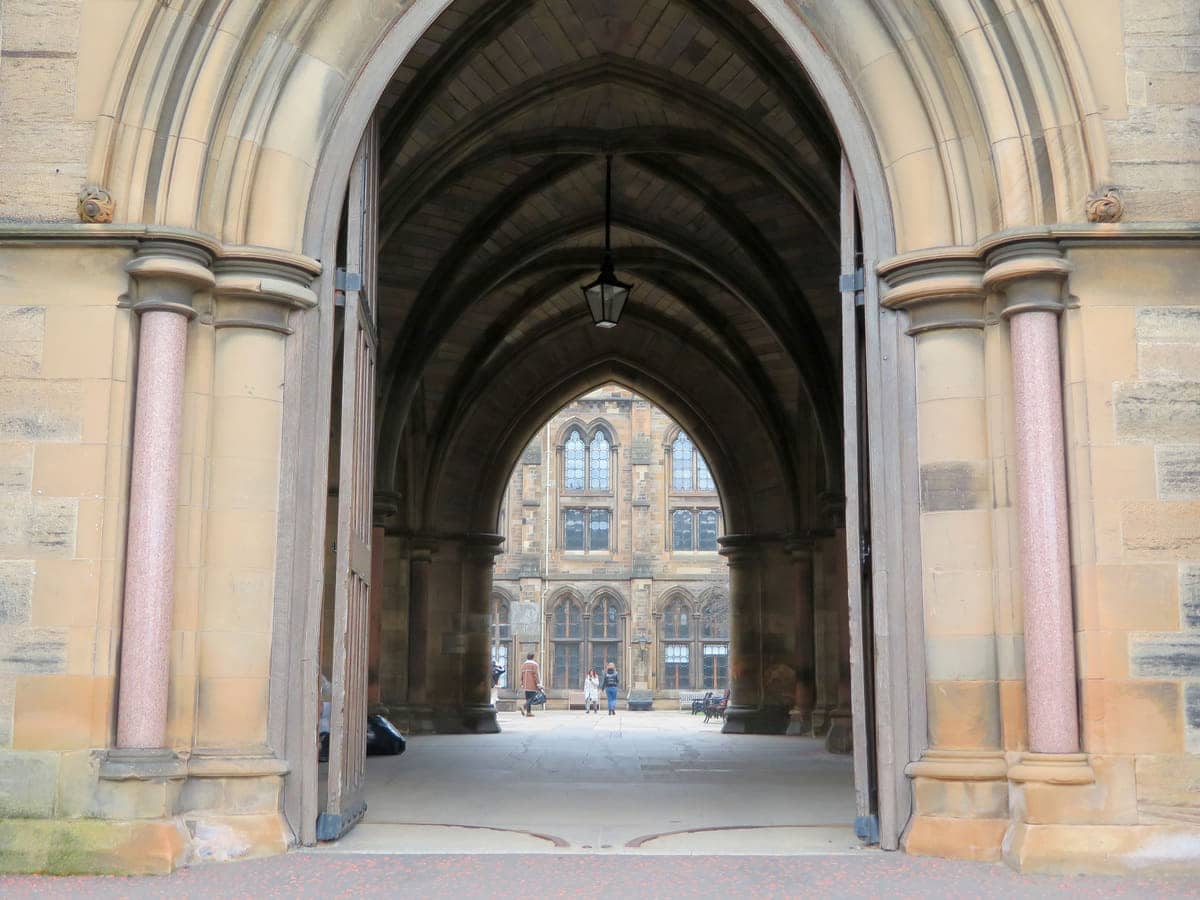
Things to Do Nearby
Kelvingrove Park. 6 Professors’ Square, Glasgow G3 6BY. 8-minute walk.
This is one of the oldest public parks in Scotland. Kelvingrove Park features a collection of memorials, walking paths, sports areas, the River Kelvin and Kelvingrove Museum.
Kelvingrove Art Gallery and Museum. Argyle St, Glasgow G3 8AG. 9-minute walk.
One of Scotland’s most-visited museums, Kelvingrove offers a diverse range of exhibits from across the globe. The museum is situated near the west end of the 84-acre Kelvingrove Park. Entry is free.
Glasgow Botanic Gardens. 730 Great Western Rd, Glasgow G12 0UE. 12-minute walk.
A 27-acre botanic garden in the heart of Glasgow. The gardens are acclaimed for the Victorian cast-iron glasshouse, Kibble Palace. Entry is free.
The Riverside Museum of Transport. 100 Pointhouse Rd, Govan, Glasgow G3 8RS. 21-minute walk.
A modern museum that explores the history of transport with interactive displays and one of the largest collections of rare cars, trains and motorbikes in Scotland. Entry is free.
The Tall Ship. 150 Pointhouse Rd, Stobcross Rd, Govan, Glasgow G3 8RS. 24-minute walk.
You’ll find the Tall Ship next to the Transport Museum on the bank of the River Clyde. The Tall Ship is a fully restored Victorian sailing ship that allows visitors to explore the historic vessel from bow to stern. There is a café and gift shop inside. Entry is free.
Frequently Asked Questions
What does Glasgow University Specialise in?
Glasgow University is a comprehensive university offering a wide range of programs and courses in various fields. However, it is particularly renowned for programs in Medicine, Veterinary Medicine, and Life Sciences. The university is also highly recognized for its research in various fields such as Physics and Astronomy.
Is the University of Glasgow prestigious?
The University of Glasgow is ranked 73rd place (out of 1,300) in the QS World University Rankings.
Was Harry Potter filmed in the University of Glasgow?
No, Harry Potter was not filmed at the University of Glasgow. However, several scenes from the Harry Potter movies were filmed in Scotland, such as Hogwarts Express journey which was filmed on the West Highland Line in the Scottish Highlands.
What visitor facilities are there at the University of Glasgow?
There are visitor facilities including public toilets and a café in the main university building. Visit the facilities page for updated information on available facilities.

